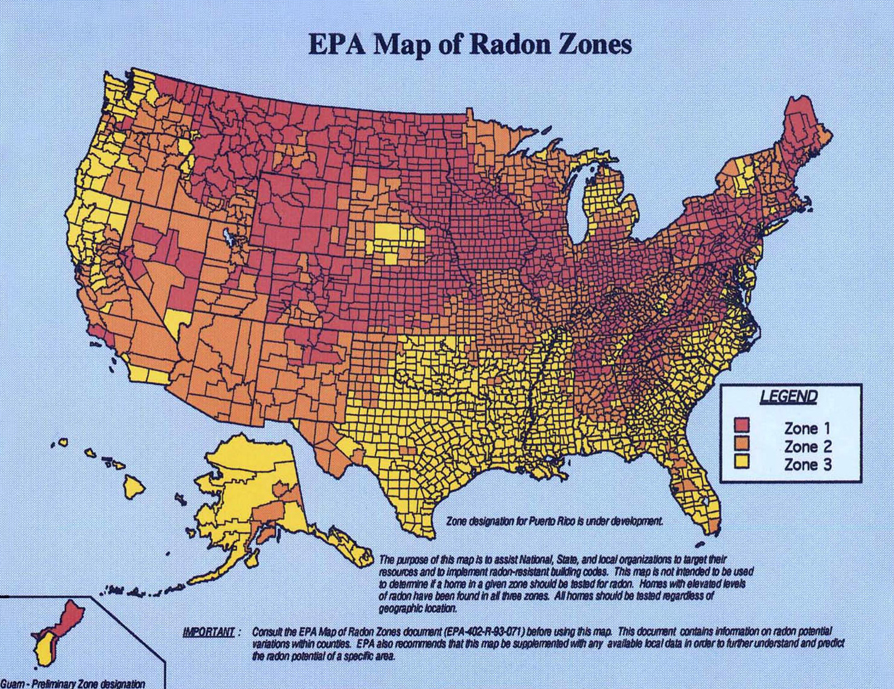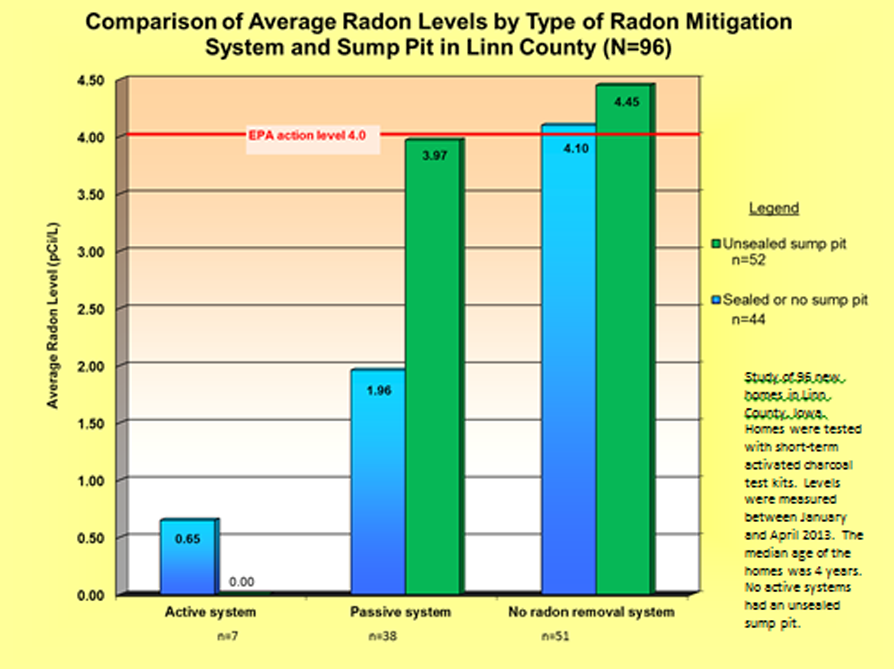Frequently Asked Questions
What is Radon?
Radon gas comes from uranium deposits in the soil under and around your home. Certain areas in the country, the Midwest, upper Midwest, New England, and the upper Northwest, have higher concentrations than other.
Radon is a class A carcinogen. Exposure to high radon levels can cause lung cancer. Radon gas is the second leading cause of lung cancer in the United States behind smoking. A smoker's risk of lung cancer significantly increases with exposure to radon gas.
Symptoms due to radon exposure do not play out immediately, but it kills 21,000 per year in the United States.
You cannot see, smell or taste radon gas. Most homeowners do not give radon a thought until they go to sell their home and the buyer requests a radon test.
Nearly one in 15 homes in the United States is estimated to have elevated levels of radon. Certain parts of the country such as Iowa, N. Dakota, S. Dakota, Indiana, Illinois, Wisconsin, Ohio,Missouri, Nebraska, and Minnesota have high levels in most counties.
The Environmental Protection Agency (EPA) states that radon is a dangerous threat to our health. The EPA has set 4.0 pCi/L as the upper limit for radon. You want to stay below 4.0 for good reason. Some people are even concerned with levels between 2.0 and 4.0.
For more information about radon in your state and county visit the EPA website: www.epa.gov/radon.
Where is Radon?
Red - Zone 1 - Counties have a predicted average indoor radon screening level greater than 4 pCi/L.
Orange - Zone 2 - Counties have a predicted average indoor radon screening level between 2 and 4 pCi/L.
Yellow - Zone 3 - Counties have a predicted average indoor radon screening level less than 2 pCi/L.

* Map provided courtesy of the EPA
How can Radon get into my house?
Four main factors drive radon entry into homes. All of these factors exist in most homes throughout the country.
1. Uranium is present in the soil nearly everywhere in the United States.
2. The soil is permeable enough to allow radon to migrate into the home through the slab, basement, or crawlspace.
3. There are numerous pathways for radon to enter the basement such as small holes, cracks, plumbing inlets, or sump pits. All homes have radon entry pathways.
4. An air pressure difference between the basement or crawlspace and the surrounding soil draws radon into the home.
Source:
Building Radon Out
United States Environmental Protection Agency (EPA)
Office of Air and Radiation
EPA/402-K-01-002
April 2001
How can Radon get in through my sump pit?
There are four things to remember and consider:
1. Radon gas is heavier than air.
2. Radon gas will travel the path of least resistance.
3. The sump pit is the largest hole in your basement floor.
4. Most sump pits either have no cover or they may have an unsealed cover.
Many years ago, sump pits were made with concrete and over the years, cracks have formed allowing a path for radon.
Sump pits of the last 30 - 50 years are either made of fiberglass or various molded plastics. If they were made well, radon will not penetrate them.
However, the holes that were cut into the side walls of the pit usually were not sealed when the inlet pipes were installed to the basin. There may be a sizable void between the pipe and the pit allowing radon gas to come through.
Many homes are constructed with a foundation perimeter of drain tile to keep storm run-off away from the foundation. The drain tile feeds into the sump pit. The drain tile will carry radon gas into the sump pit.
Today, with radon awareness, many new homes are built with gas-tight sump pits passively vented to the outside.
A 2010 study by Iowa's Linn County Public Health shows graphically the affect of sealed and unsealed sump pits in contributing to elevated radon levels.

* Graphic courtesy of lchh.org
How do I fix my Radon problem?
The PlumbStar USA™ Sump Pit Approach
Start by installing:
The Original Radon Sump Dome™ (Patent Pending)
- Sits over an open or unsealed sump pit
- Is sealed to the concrete floor, thus trapping radon gas within the sump pit
- Can be used with a "passive" or "active" vent
- Can be installed in existing or new homes
* The sump pump can be serviced without disturbing the gas tight-seal and therefore the intent of a sealed sump pit.
Optionally, you can add:
A radon vent fan which will convert a "passive" system into an "active" system.
* You should always seal any cracks or voids in your basement floor and walls.
Can I do it myself?
There are many good reasons to hire a professional plumber or radon contractor to solve your home's problem. They are well trained and equipped to get the job done.
However, with research, good planning, and basic skills, doing the work yourself will solve the problem and save money too.
Plumbstar USA™ products are designed for ease of installation and they come with clear written instructions and access to our helpful website.



